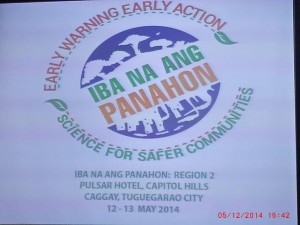Metro Manila execs discuss disaster preparedness
MANILA, Philippines — When it comes to disaster mitigation and response, it pays to be imaginative.
Local government units in Metro Manila and neighboring provinces, as well as non-governmental organizations and business groups, are being guided by a “disaster imagination concept” at a two-day disaster mitigation and response conference organized by the Department of Science and Technology and the Office of Civil Defense that began on Thursday.
The conference is the culmination of a three-month roadshow of the DOST and OCD called “Iba na ang panahon (INAP): Science for Safer Communities” that reached provinces in the country’s 17 regions.
The “disaster imagination concept” is the brainchild of the Philippine Institute of Volcanology and Seismology (Phivolcs) led by its director, Renato Solidum.
“We want to popularize the disaster imagination concept. Think of yourself as a chess player who wants to be several steps ahead [of your competition],” Solidum told reporters covering the conference at the Philippine International Convention Center.
Solidum said last year’s disasters —Super Typhoon Yolanda and the massive earthquake in Bohol— raised people’s awareness that disaster mitigation and response are a serious matter.
The Phivolcs has categorized the Metro Manila cities into four clusters, their division based on the expected effects of a 7.2 magnitude earthquake in the capital, such as the collapse of bridges and other infrastructure that would isolate the cities.
Cluster 1 is composed of Quezon City, San Juan, Caloocan, Valenzuela, Pampanga, and Bulacan; Cluster 2 consists of Pasay, Manila, Malabon, Navotas, and Cavite (Carmona and Bacoor); Cluster 3 includes Muntinlupa, Parañaque, Mandaluyong, Taguig, Pateros, Las Piñas, Makati, and Laguna; and Cluster consists of Pasig, Marikina, and Rizal (San Mateo, Cainta, Antipolo, Montalban, Taytay, Angono, and Rodriguez).
Cluster 5 consists of society at large, utilities, non-governmental organizations and civil society groups, business groups, and the academe among others.
Each cluster would work on the “worst case scenario” predicted by the Phivolcs based on its Rapid Earthquake Damage Assessment System (REDAS) and come up with the protocols they would have to follow, said Raymond Maximo, Phivolcs science research specialist.
Maximo said the cities in Cluster 2, for example, are those that are most vulnerable to tsunami hazards following a 7.2 magnitude earthquake.
Solidum added that businesses, utility groups, airports, piers, and hospitals, among others should be able to come up with a “recovery time” when they are hit by disasters.
“It doesn’t have to be a hundred percent right away… but it’s good to set a deadline to resume operations,” Solidum said.
RELATED STORIES
Budget wanting in disaster preparedness
PH can learn from Japan about disaster preparedness















